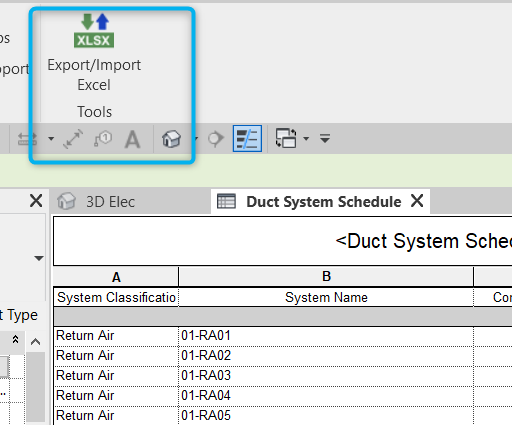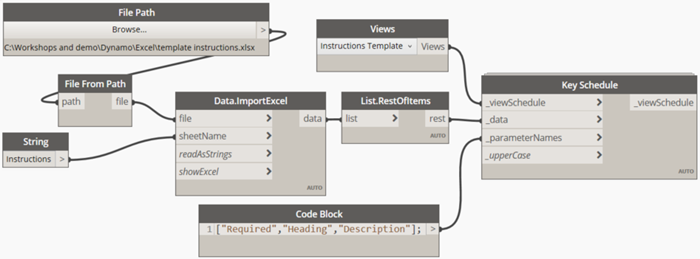Revit Plugins and Tools: Enhancing Your BIM Journey
Wiki Article
Excel Empowerment: Supercharge Your Revit Projects With Seamless Information Import
Are you looking to supercharge your Revit jobs? With smooth information import, Excel empowerment can be the secret to opening your job's complete capacity. Picture simplifying the import procedure and taking full advantage of effectiveness through smooth information assimilation. In this post, we will share tips and techniques for utilizing Master your Revit tasks. Discover how utilizing the Excel-Revit link can result in success in your tasks. Prepare yourself to take your Revit tasks to the following degree with Excel empowerment.The Power of Excel in Revit Projects
You can supercharge your Revit jobs by using the power of Excel for smooth information import. Excel is a functional device that can significantly boost your operations and performance in Revit (revit tools). With Excel, you can conveniently import and handle big amounts of information, saving you effort and timeAmong the vital advantages of making use of Excel in Revit is its capacity to handle complex calculations and solutions. You can make use of Excel to do estimations on your data, such as generating amounts, computing prices, or examining efficiency. When working with large jobs that need substantial computations., this can be especially valuable.

Furthermore, Excel provides a acquainted and straightforward user interface for working with information. You can arrange and control your data in a spreadsheet layout, making it very easy to watch and edit. This can be specifically useful when working together with others or when you require to make quick modifications to your task information.
Moreover, Excel permits you to quickly import and export data in between Revit and various other software application applications. You can import information from exterior resources into Revit, such as material specifications or devices timetables, and export data from Revit to Excel for further analysis or reporting.
Streamlining Data Import With Master Revit
Improving information import in Revit ends up being simpler when utilizing Excel as a tool. With Excel, you have the power to perfectly import and handle huge quantities of data in your Revit tasks. By utilizing the acquainted interface and functionality of Excel, you can save time and rise effectiveness in your operations.Among the vital advantages of using Excel for information import in Revit is the capability to easily organize and adjust data prior to importing it into your task. With Excel's powerful attributes, such as arranging, filtering system, and solutions, you can quickly tidy up and layout your data to meet the needs of your Revit task.
In addition, Excel permits you to import data from various resources, such as data sources, spread sheets, or even web-based applications. This adaptability gives you the liberty to collect data from different platforms and settle it into one main area for very easy gain access to and administration.
On top of that, Excel offers the alternative to develop personalized design templates for information import in Revit. By creating templates customized to your project's details requirements, you can make sure consistency and accuracy in your data import procedure.
Total, utilizing Excel as a tool for data import in Revit streamlines the process and enhances your performance. So why not make use of this effective tool and supercharge your Revit tasks with seamless data import using Excel?
Making Best Use Of Performance With Seamless Data Integration
Optimize effectiveness by flawlessly integrating and handling information in your operations. Gone are the days of by hand inputting information into your system, wasting valuable time and resources. With smooth information assimilation, you can enhance your procedures and supercharge your productivity.
When you have a seamless assimilation system in location,Handling data comes to be a breeze. You can conveniently organize and classify your information, making it less complicated to recover and evaluate. Bid farewell to the days of undergoing endless spread sheets for that one piece of details you need.

Excel Tips and Tricks for Revit Projects
With these suggestions and tricks, you'll have the ability to effectively handle your Revit jobs utilizing Excel. One of the initial things you can do is to make use of Excel's powerful sorting and filtering system functions. This will enable you to rapidly organize and evaluate your project data. You can arrange elements by their names or filter them based on certain requirements, such as their condition or location. An additional valuable attribute is the capability to produce formulas in Excel. You can use solutions to determine quantities, execute intricate estimations, and even automate specific tasks. This can save you a great deal of time and initiative in your Revit projects. In addition, you can utilize Excel to develop custom-made templates for information import and export. This way, you can ensure uniformity and accuracy when moving information in between Revit and Excel. Don't fail to remember concerning Excel's conditional format feature. You can utilize this to highlight certain elements or worths based upon specific conditions. This can help you promptly recognize and deal with any type of issues or anomalies in your job data. Generally, mastering these Excel review methods and ideas will substantially improve your capability to take care of and manipulate information in your Revit tasks.Using the Excel-Revit Link for Success
To make the most of your Excel-Revit link, benefit from the capacity to effortlessly move and integrate project information. By using this effective connection, you can supercharge your Revit tasks and simplify your workflow. With just a couple of easy steps, you can import data from Excel directly right into Revit, saving you time and making certain precision.Among the essential benefits of the Excel-Revit connection is the capability to transfer information effortlessly. Whether you are importing schedules, space data, and even geometry info, Excel more info here gives an easy to use user interface that allows you to arrange and manipulate your information before importing it into Revit. This implies you can quickly upgrade and change your task details in Excel, and with a few clicks, move those modifications directly into your Revit design.
In enhancement to transferring information, the Excel-Revit connection additionally enables synchronization. This implies that any type of modifications made in Excel can be you could try here immediately updated in Revit, making certain that your project information is always up to day. This synchronization attribute is especially helpful when handling huge and complicated tasks, as it removes the need for hands-on data entry and lowers the risk of mistakes.
Final Thought
So there you have it - the power of Excel in Revit tasks can not be undervalued. By streamlining data import and making the most of effectiveness through smooth data combination, you can supercharge your projects and achieve success. With the Excel-Revit link, you have the devices to take your tasks to the following degree and attain amazing outcomes. So do not wait any longer, begin harnessing the power of Master your Revit tasks today and unlock a world of possibilities.You can supercharge your Revit projects by using the power of Excel for seamless information import. With Excel, you have the power to seamlessly import and manage big amounts of data in your Revit projects (revit tools). In general, mastering these Excel methods and suggestions will considerably enhance your ability to manage and control data in your Revit jobs
Whether you are importing routines, space data, or even geometry information, Excel gives an user-friendly user interface that permits you to arrange and manipulate your data prior to importing it into Revit. By improving data import and taking full advantage of performance via smooth information assimilation, you can supercharge your projects and attain success.
Report this wiki page